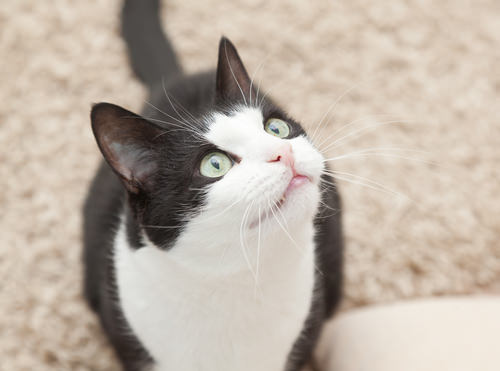
Everyone is interested in intra-species communication. People that have cats definitely know that they are attempting to communicate with their sounds and body language. But did you realize that your cat has actually evolved to exploit you?
We already know that cats use their purr and vocalizations to solicit reward from their owners. But now there’s scientific proof that cats have adapted to leverage our human tendencies. It seems that cat lovers (and even non cat lovers) are excellent students.
In a study, researchers recorded purrs and vocalizations from multiple cats during variable situations. These were played to a group of volunteers and even individuals that do not own cats could tell that the solicitation purrs were more urgent¹. They found that buried within the purr was higher frequency element that is inherently difficult for humans to ignore. The characteristics acoustically are analogous to the frequency of the cries of a human infant and even though it is not obvious to the listener, it seems that cats have evolved to exploit a human’s sensitivity to certain sounds that related to the nurturing of our offspring.²
So your cat understands you down to a basic evolutionary level… so well that it isn’t even a conscious choice for either of you. Fortunately, exploitation is a two way street because humans certainly get a lot out of our relationship with our cats.
But the next time you jump to your feet to do your cat’s bidding, pause for a moment to recognize his evolutionary genius and your utter compliance to his power!
Join the conFURsation on Facebook by clicking here.
- The cry embedded within the purr. Curr Biol. 2009 Jul 14;19(13):R507-8. doi: 10.1016/j.cub.2009.05.033. McComb K, Taylor AM, Wilson C, Charlton BD.
- Buchwald, J.S. & Shipley, C. (1985). A comparative model of infant cry. Infant Crying: Theoretical and Research Perspectives, E.M. Lester and C.F.Z. Boukydis eds. (New York: Plenum), pp. 279–305
